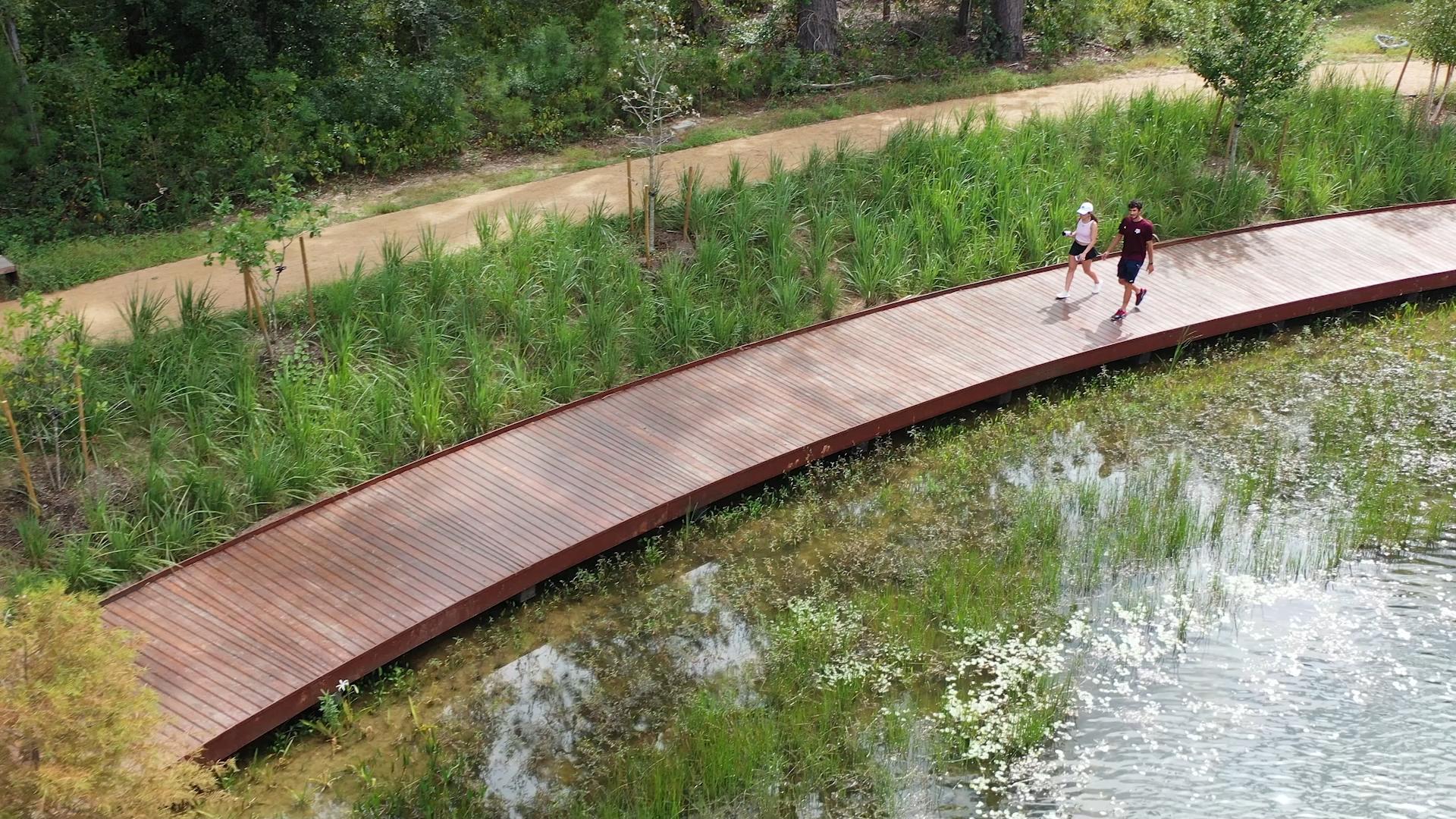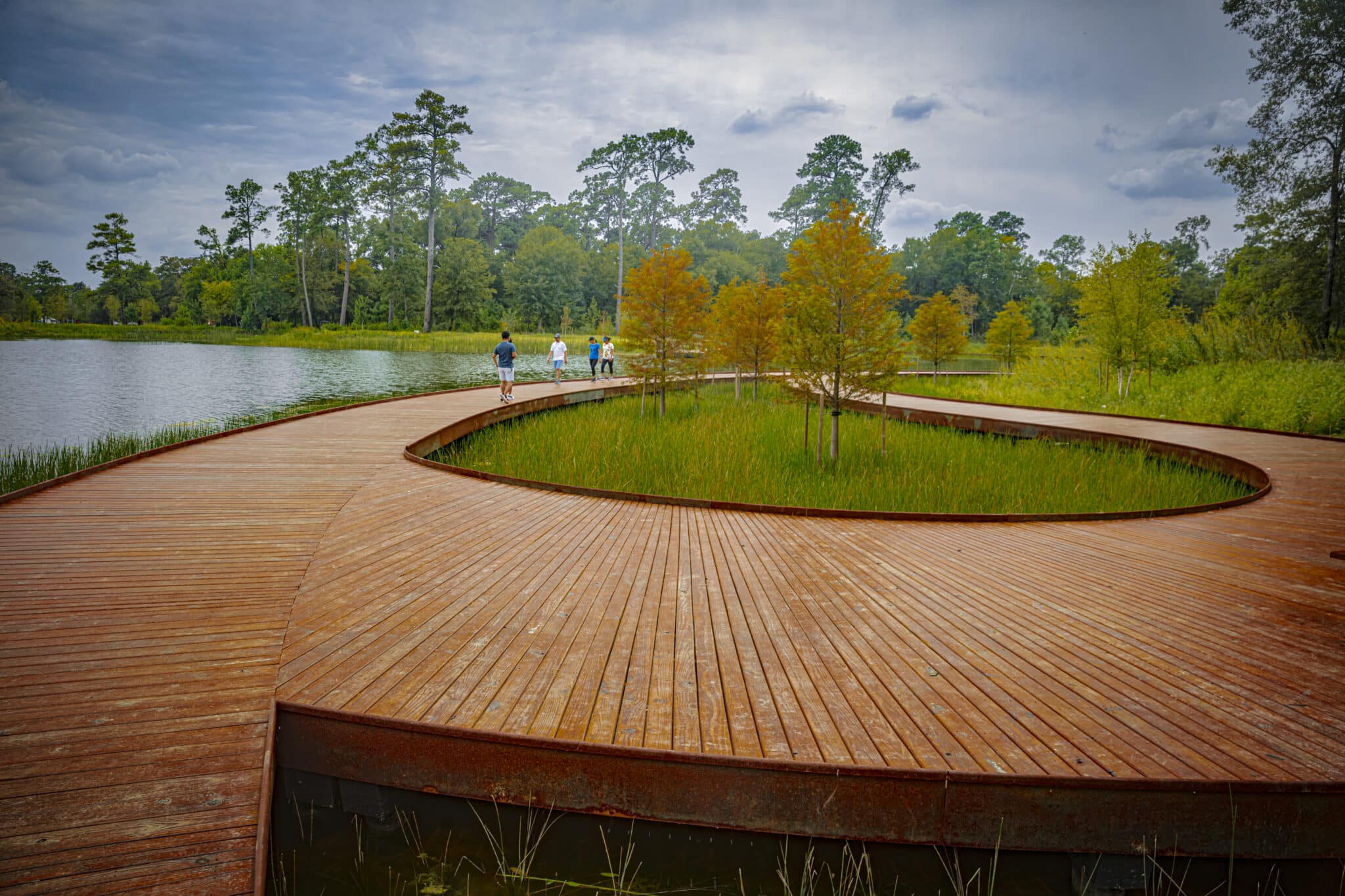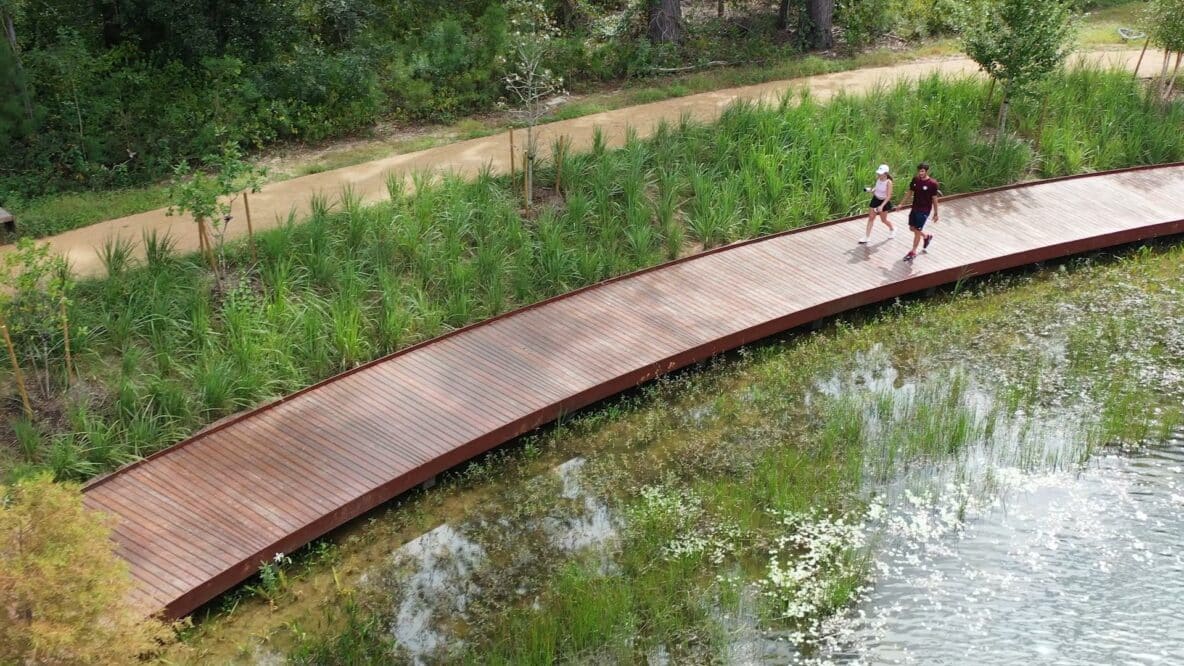
Enhancing Public Access To Wetlands Without Ecological Harm
Wetlands are some of the most ecologically significant and fragile ecosystems on the planet, providing critical services such as water filtration, carbon sequestration, and habitat for diverse wildlife. However, public access to these environments can lead to unintended ecological consequences. Timber boardwalks and trails offer a sustainable solution that allows people to experience wetlands while minimizing damage to the environment.
York Bridge Concepts (YBC) specializes in the design and construction of timber boardwalks that balance accessibility with environmental responsibility. This article explores the benefits of timber boardwalks and trails, the challenges of wetland construction, and how YBC's innovative Deck-Level construction techniques ensure minimal ecological disturbance.
The Importance of Public Access To Wetlands
Providing access to wetlands for education, recreation, and conservation is essential for fostering public awareness and appreciation of these environments. Some key benefits of sustainable wetland access include:
- Environmental Education: Boardwalks allow visitors to observe wetland ecosystems up close without harming plant and animal life (National Park Service, 2021).
- Eco-Tourism: Many parks and nature reserves rely on boardwalks to attract visitors, supporting local economies (U.S. Fish and Wildlife Service, 2022).
- Scientific Research: Elevated trails enable scientists to study wetlands without direct impact on soil or vegetation (U.S. Geological Survey, 2020)
- Conservation Support: People who experience wetlands firsthand are more likely to support their protections (Environmental Protection Agency, 2021).
Challenges of Constructing Boardwalks in Wetlands
Building infrastructure in wetlands presents unique challenges, including:
- Soil Instability: Wetlands have soft, saturated soils that can shift or collapse under heavy loads (USDA Forest Service, 2019).
- Regulatory Compliance: Federal and state laws, including the Clean Water Act and the North American Wetlands Conservation Act (NAWCA), regulate wetland development (USACE, 2021).
- Erosion and Flooding: Boardwalks must be designed to withstand seasonal water level fluctuations and extreme weather (FEMA, 2021).
- Habitat Preservation: Construction must minimize impacts on sensitive species and ecosystems (Ramsar Convention Secretariat, 2018).
Timber Boardwalks: A Sustainable Solution
Timber boardwalks are an environmentally friendly alternative to traditional infrastructure. Their advantages include:
- Minimal Ground Disturbance: Prefabricated timber components reduce on-site impact (National Park Service, 2021).
- Lightweight Design: Timber's natural lightweight makes it ideal for wetland applications (American Wood Council, 2020).
- Aesthetic Integration: Timber blends seamlessly into natural landscapes, enhancing visitor experiences (USDA Forest Service, 2019).
- Long-Term Durability: Properly treated wood resists moisture and decay, extending the lifespan of boardwalks (U.S. Forest Service, 2020).
YBC's Top-Down Construction: Minimizing Ecological Impact
York Bridge Concepts employs Deck-Level (top-down) construction, a method that minimizes disruption to wetland ecosystems. This technique involves:
- Building from Above: Machinery is positioned on completed sections, preventing soil compaction and erosion (EPA, 2021).
- Avoiding Temporary Roads: Traditional construction requires access roads, which can damage vegetation; YBC's method eliminates this need (USFWS, 2022).
- Rapid Installation: Our components are custom built on-site, which reduces construction time and minimize human impact (USACE, 2021).

Case Study: Memorial Park Boardwalk, Houston, Texas
One of YBC's standout projects is the Memorial Park Boardwalk in Houston, TX, which demonstrates sustainable wetland access solutions. Key aspects of the project:
- Elevated timber boardwalk designed to prevent soil erosion and flooding.
- Eco-friendly materials with non-toxic coatings to avoid contamination
- Collaboration with conservation groups: to ensure regulatory compliance
The result was a sustainable, visually appealing, and durable boardwalk that enhances public access without harming the environment.
The Future of Sustainable Boardwalks
With increasing awareness of the need for wetland conservation, sustainable boardwalk designs will continue to evolve. Future trends include:
- Advanced timber treatments to extend durability without using harmful chemicals (USDA Forest Service, 2020).
- Smart monitoring systems that track environmental conditions and boardwalk stability (USGS, 2020).
- Increased regulatory collaboration to develop wetland infrastructure that supports long-term conservation goals (FWS, 2022).
Timber boardwalks and trails offer a sustainable, effective solution for wetland access, allowing people to explore and appreciate these environments without harming their delicate ecosystems. YBC's innovative top-down construction methods and commitment to environmental responsibility make YBC the leader in sustainable wetland infrastructure. By prioritizing eco-friendly designs and complying with regulatory standards, timber boardwalks will continue to play a crucial role in balancing public access with wetland conservation.
American Wood Council. (2020). Retrieved from https://www.awc.org/
Environmental Protection Agency (EPA). (2021). Sustainable infrastructure in wetlands. Retrieved from https://www.epa.gov/wetlands
Federal Emergency Management Agency (FEMA). (2021). Floodplain management. Retrieved from https://www.fema.gov/floodplain-management
Memorial Park Conservancy. (2022). Retrieved from https://www.memorialparkconservancy.org/
National Park Service. (2021). Sustainable trails & boardwalks. Retrieved from https://www.nps.gov/subjects/trails/index.htm
North American Wetlands Conservation Act (NAWCA). (2022). Retrieved from https://www.fws.gov/service/north-american-wetlands-conservation-act-nawca-us-standard-grants
Ramsar Convention Secretariat. (2018). Wetland conservation principles. Retrieved from https://www.ramsar.org/
United States Army Corps of Engineers (USACE). (2021). Wetland permitting. Retrieved from https://www.usace.army.mil/
United States Department of Agriculture (USDA) Forest Service. (2019). Wetland infrastructure guidelines. Retrieved from https://www.nrcs.usda.gov/sites/default/files/2022-09/656_NHCP_CPS_Constructed_Wetland_2020_0.pdf
United States Fish and Wildlife Service (USFWS). (2022). Wetland protection policies. Retrieved from https://www.fws.gov/law/north-american-wetlands-conservation-act
United States Geological Survey (USGS). (2020). Wetlands and water resources. Retrieved from https://www.usgs.gov/centers/wetland-and-aquatic-research-center/science/science-topics/wetlands
Create Your Legacy Today
Discover the intersection of strength, durability, and environmental responsibility with York Bridge Concepts. Let's build a bridge to the future together.

